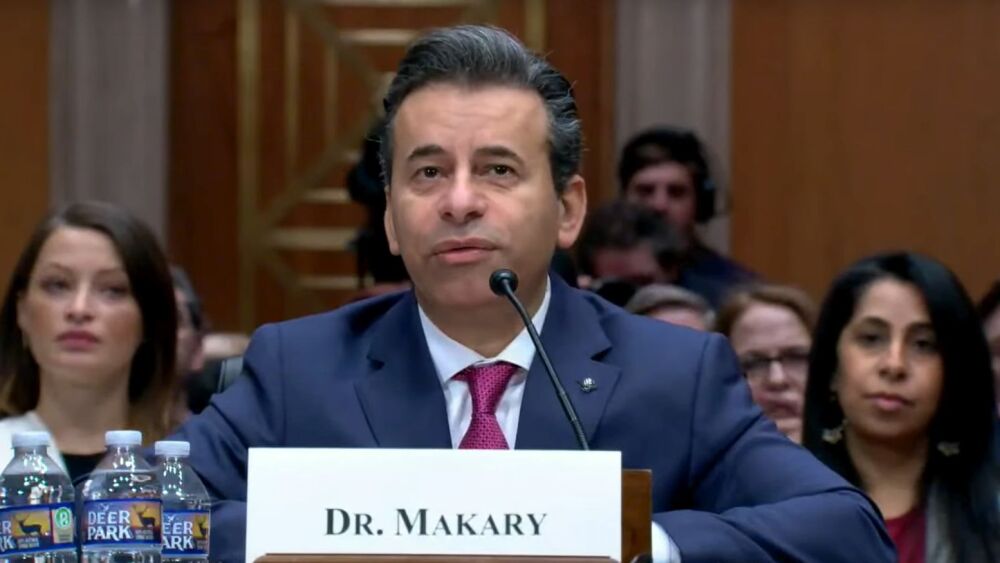Companies like Chameleon Biosciences and Code Biotherapeutics will present their latest research at the FUTURES 2022 conference hosted by CureDuchenne.
CureDuchenne CEO Debra Miller speaks at the FUTURES 2019 conference/Courtesy CureDuchenne
CureDuchenne, a company committed to finding a cure for Duchenne muscular dystrophy (DMD), will be holding its FUTURES 2022 conference in Orlando, Florida this May.
“CureDuchenne’s mission is to extend and improve the lives of everyone affected by Duchenne muscular dystrophy,” CEO Debra Miller told BioSpace. “Duchenne is a fatal and progressive muscle wasting disease. It affects primarily boys, although girls can be carriers, so it really does affect the whole family.” Miller explained that the boys who suffer are typically confined to a wheelchair by the age of 12.
“Our mission is to fund transformative and impactful research that stands a good chance of resulting in an approved drug,” she continued. “We also provide support and resources to the families that are living with this disease.”
The national conference will bring together those affected by DMD, including families, children, parents, caregivers and adults living with the disease, with the scientists and researchers who are studying it. “It’s an opportunity for everybody to come together and learn the latest about the current research as well as the best clinical care that’s available. We also want to provide a networking and support outlet for the families,” she said.
Miller also noted that it’s been two years since the Duchenne community was able to come together in person. “We’re really excited about this year. We think it’s going to be nothing short of a Duchenne reunion.”
Research partners, such as the biotech and pharma companies that are developing DMD drugs, will be presenting information at FUTURES. Miller also shared that the company has “a couple of surprises for the community that we’ll be sharing when we’re there.”
One of the research partners presenting at the conference is Chameleon Biosciences, a gene therapy company with a novel technology called EVADER™ that makes re-dosing possible. “We’re really excited by them and what this technology is potentially capable of doing,” Dr. Michael Kelly, chief scientific officer of CureDuchenne, told BioSpace. “The potential to re-dose is a key aspect of what Chameleon’s really focused on.”
Code Biotherapeutics will also be presenting at FUTURES. The Hatfield, Pennsylvania-based biotech is developing a chemogenetic platform designed to modulate neuronal activity.
“This is another really exciting technology that’s very novel and groundbreaking. If it’s successful, it has an opportunity to address a lot of potential limitations and weaknesses,” Kelly said.
He explained that Adeno-associated virus (AAV) delivery has packing capacity limitations, but Code’s platform does not, which opens the door to formerly impossible investigations. The treatment can be re-dosed, as well. “If their technology platform is successful, it has the ability to transform the way we think about delivering much larger gene transcripts and re-dosing.”
The conference will also discuss what’s on the horizon in DMD treatment. “The focus that we had a number of years ago was to accelerate gene therapy to the point where it is today,” Kelly said.
Though clinical trials in the DMD space have progressed, CureDuchenne is aware of the limitations these therapies present. “This has driven our global strategy. That’s what FUTURES is going to lay out for the parents and for the families. They’ll see for the first time where we are in gene therapy, the estimate on when these drugs are likely to be approved, and then what’s next.”
Miller added that “this is extremely valuable information to the families because they’re being faced right now with choices.” When Miller’s own son was diagnosed with DMD about 20 years ago, there were no clinical trials available. “Now, families are having to make real decisions. ‘Do I put my kid on an approved exon-skipping drug that’s first-generation, or do I wait for a second-generation exon skipping trial? Do I put my son into gene therapy? If we can’t re-dose him because of the current limitations, then what do we do?’”
CureDuchenne works with families to present them with a decision tree, showing them available options as well as the pros and cons of each. “It’s an exciting time, but it can be a very confusing time for the families right now,” she said.
Miller shared that CureDuchenne provided early funding to a large percentage of companies in the DMD space that are now in the clinical trial stage. “Our vision is our name: to cure Duchenne,” she said. “Our goal is to uncover, fund and de-risk early science.” By finding the technology that’s most likely to work for Duchenne, the company is “filling the therapeutic pipeline.”
Miller makes a point to sit in on the Department of Defense’s Congressionally Directed Medical Research Programs, and stated that CureDuchenne is the largest funder of DMD research outside of the federal government.
She described the softer side of the company, outlining its commitment to providing community support. “One thing that is really important to us is providing hope to the families. We do that by highlighting and celebrating things that our young men with Duchenne can do. We focus on their accomplishments and how they’re continually raising the bar in terms of their achievements.”
When her son was diagnosed with DMD, Miller and her family found Jennifer Wallace Valdes, a physical therapist (PT) who was interested in the disease. Together, they traveled around the country to teach other PTs how to treat Duchenne.
“Most physical therapists are taught to rehabilitate and strengthen patients, but you can’t do that with kids that have Duchenne. Now, we’ve trained a whole generation of physical therapists in the States and internationally who have the skills to enhance the kids’ ambulation and their ability to remain walking for longer,” she explained.
The company has also created a data-sharing platform called CureDuchenne Link that connects researchers directly with information provided by the DMD community. “We have biospecimens from patients that are tied to patient-reported surveys, medical records and genomic information. We believe that this will complete the circle of research for those who want to study Duchenne,” Miller said.
Kelly wants parents to know that “the whole scientific toolbox has been opened and thrown at this disease. The first set of approved therapies are helpful and will lead the way for the next. There’s a light at the end of the tunnel. The next handful of years will be transformative for this disease.”
Miller agreed, saying, “We’re gonna cure this disease. I can see it.” She shared that when her son was diagnosed, she felt as though her family was stranded in the middle of the ocean, with a raging storm causing massive waves that prevented them from seeing which direction they were headed. “Now, we can see the coastline. The skies have cleared. We’re gonna get there.”
Miller said she sometimes has to take a step back to truly appreciate how far DMD treatment has come. “It’s not science fiction anymore. It’s science, and it’s development. It’s pretty exciting.”





